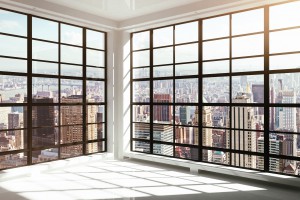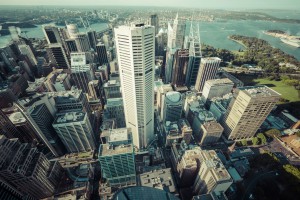Apartment or houses? House or apartments?
It's the old argument - which make the best investments?
Well...some data from the recent Census is swinging the pendulum to apartments, but before I discuss this let's look at some basics:
When you select your investment property you really have 3 variables
- Your Budget - this is usually set by the banks, so you don't have much say in it
- Location - since location will do 80% of the heavy lifting for your investment's performance, you can't compromise on this
- The Property - you should buy the best property you can buy in the best location you can afford - and if your budget is restricted then you're better off buying an apartment - particularly in Melbourne or Sydney where apartment living has become the way more and more locals live. However in Brisbane and the other capitals, in general a house makes a better investment,
How we live is changing.
The 2016 Census provides some interesting insight into how Australians live.
As Australia’s economy shifts towards a knowledge based services economy concentrated in the centre of our big cities, more people are trading space for place.
By this I mean that, particularly in Sydney and Melbourne, more of us are trading our backyards for balconies or courtyards to gain for better access to our jobs, lifestyle and amenities.
In the past most considered apartment living the domain of students, the poor or young singles and more recently retirees, while families would tend live in detached housing.
Of course the great Australian dream of a house on a quarter block would be considered a strange concept for many European and Asian cities if you were thinking consider living in any big international city, it's unlikely you'd be considering buying a detached house.
And the data from the latest Census highlights how Australia is trending towards a more compact, cosmopolitan way of life and more families with children are now living in apartments.
At the 2011 census, 50,000 families with children lived in high rise apartments across Australia.
In 2016, this increased to 79,000 families, a jump of 56 per cent in five years.
Demographers at SGS Economics and Planning have summarised these finding well:
Source: SGS Economics and Planning
What has caused these changing trends?
Here's what SGS Economics and planning had to say:
- High house prices are making purchasing a detached house increasingly difficult, and those that are affordable are typically further away from good job opportunities and services.
- It is now common place for family households with two parents to have both parents working.
This creates a ‘spatial leash’, compelling working parents to live as close as possible to where they work. - Preferences are shifting and the detached suburban home is not necessarily the ‘great Australian dream’.
People are busier than ever and a big house on a large lot means more upkeep.
People are eating out more, participating in more cultural activities and drawing on more health and community services. As a result, families are trading private space for better access.
State by State
In their article SGS Economics dug deep to give a state by state rundown:
Here's a summary:
- Most apartments are located in Australia’s capital cities, particularly in Sydney and Melbourne. All cities have experienced an increase in the absolute number of families with children living in apartments, with an increase in the proportion of families in apartment households.
- Typically, areas surrounding the CBD rather than within the CBD are preferred by family with children apartment dwellers.
This is likely due to good access to jobs, lower urban form and good access to parks and other local community facilities. However, this is not consistent across cities. - Sydney, has the largest proportion of apartments occupied by families with children at 25 per cent in 2016 (up from 22 per cent in 2011).
It also had the largest increase with 18,600 new high rise apartments being occupied by families with children in 2016.
There are several areas, including North Sydney, Parramatta, and the inner south western suburbs, that are very popular for families with children living in apartments.
These locations are attractive to families for a number of reasons, including the types of apartments available, better relative affordability (compared to detached houses) and access to employment hubs. - Melbourne, there has actually been a slight decrease in the proportion of apartments occupied by families with children, from 14 per cent to 12 per cent, while the actual number has still increased by 4,200 dwellings. This is possibly due to the significant number of smaller apartments being developed in the city core, and an increasing number of unoccupied dwellings in the city centre.
The number of families living in apartments in the CBD and Docklands doubled between 2011 and 2016.
Areas located further from the CBD have seen less of an increase, and in some cases a decrease, in families living in apartments, likely due to alternative compact options available such as townhouses. - Brisbane, there are over 4,500 high rise apartments occupied by families with children in 2016, almost double since 2011.
Over 70 per cent of these apartments are located in the inner city, highlighting the preference for inner city areas for families living in apartments.
Overall there was a marginal increase in the proportion of apartments occupied by families with children since 2011, to almost 14 per cent in 2016. Interestingly, Brisbane has a greater proportion of apartments occupied by families with children than compared to Melbourne, Adelaide and Perth. - Perth, there are 2,000 high rise apartments occupied by families with children in 2016, comprising 12 per cent of all apartments in the city (up from 11 per cent in 2011).
Over 60 per cent of these are located in inner Perth, with other popular areas being the south east and south western suburbs. - Adelaide, there has been an increase in the proportion of apartments occupied by families with children, at 11 per cent in 2016 (up from 9 per cent in 2011).
Over half of these are located in Adelaide Central and Hills. - In Darwin, there has been a robust increase in the proportion of apartments occupied by families with children, at 21 per cent in 2016 (up from 17 per cent in 2011).
The total number of high rise apartments in Darwin has doubled since 2011, with a quarter of these new apartments being occupied by families with children. - In Hobart, we see that there has been a drop in the proportion of apartments occupied by families with children.
However, there is a very small number of apartments in Hobart, with only 50 units being occupied by families with children (out of 600 high rise apartments in 2016).





















